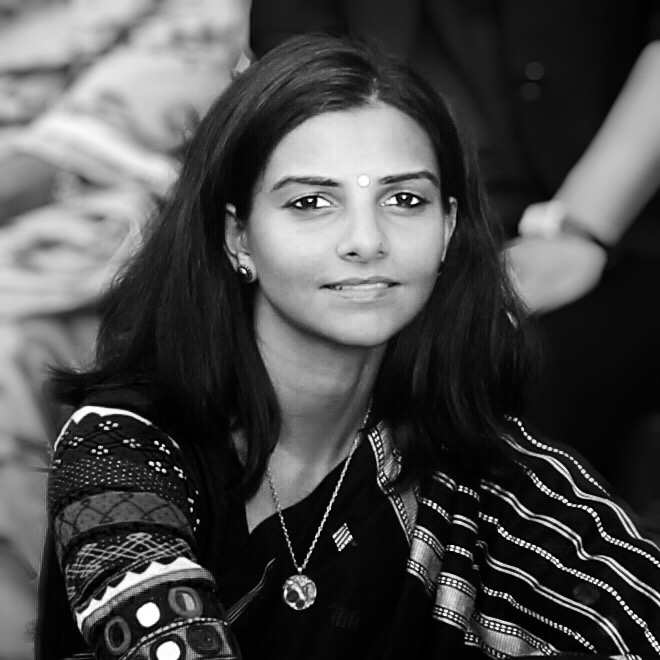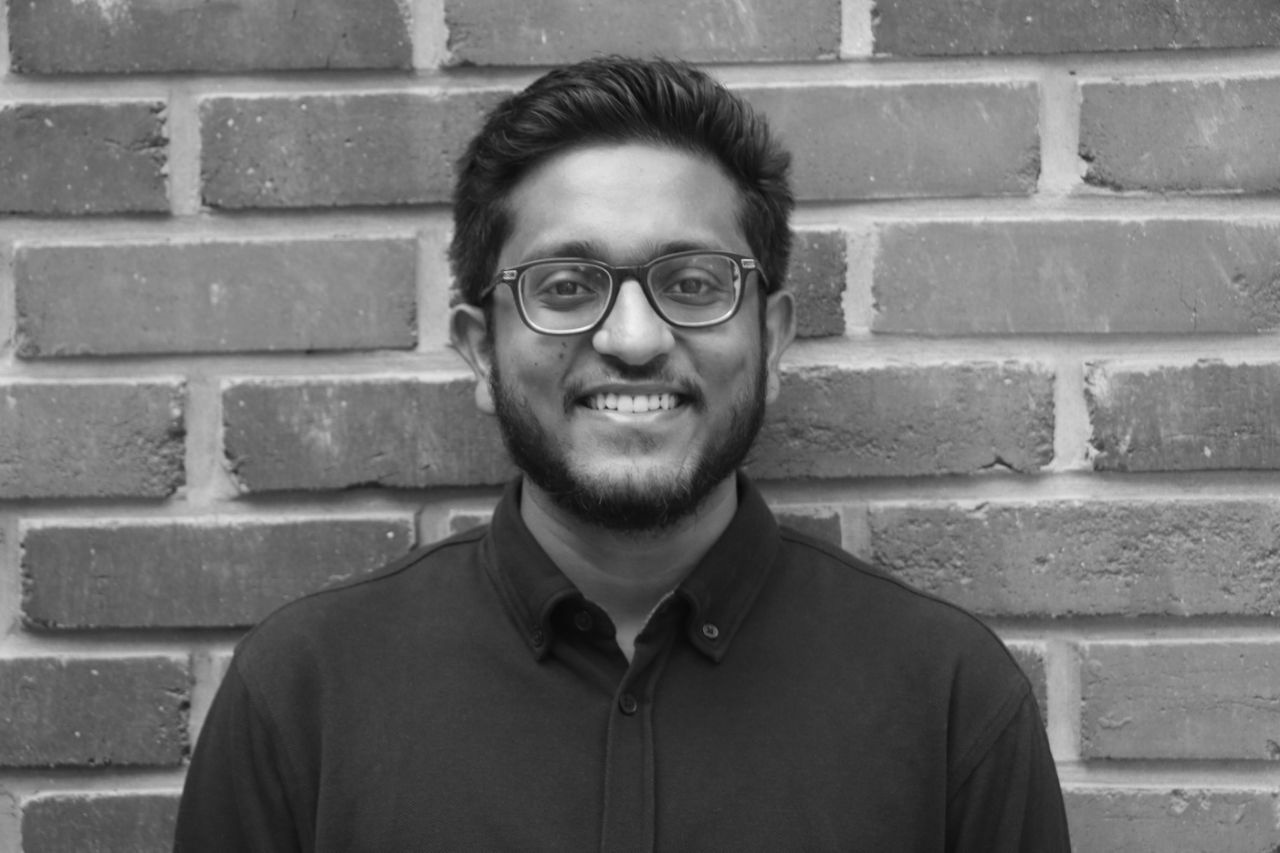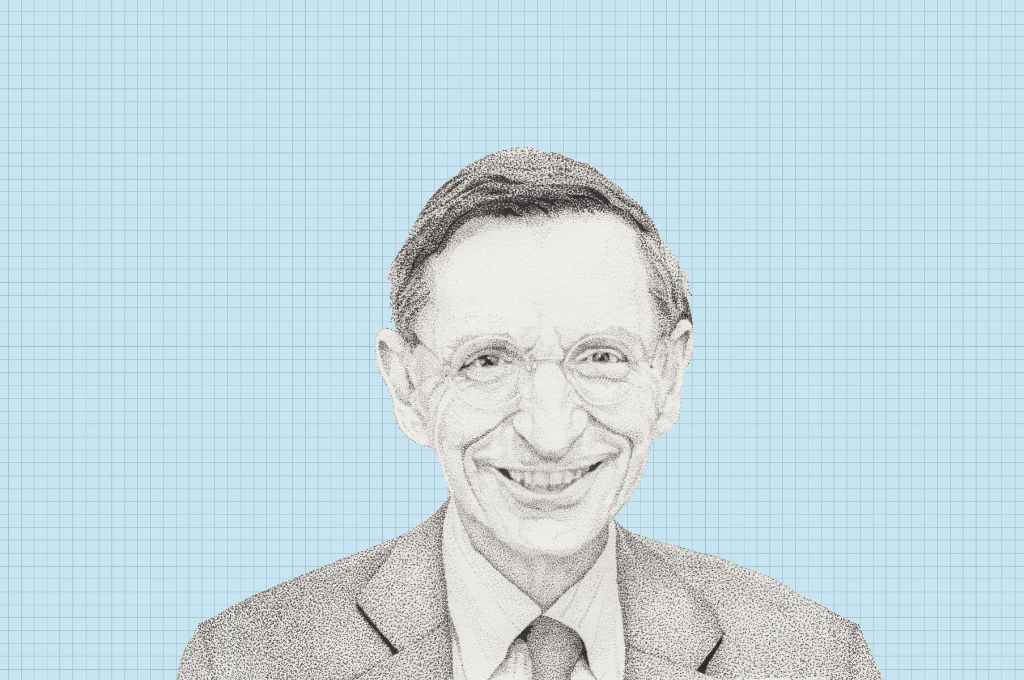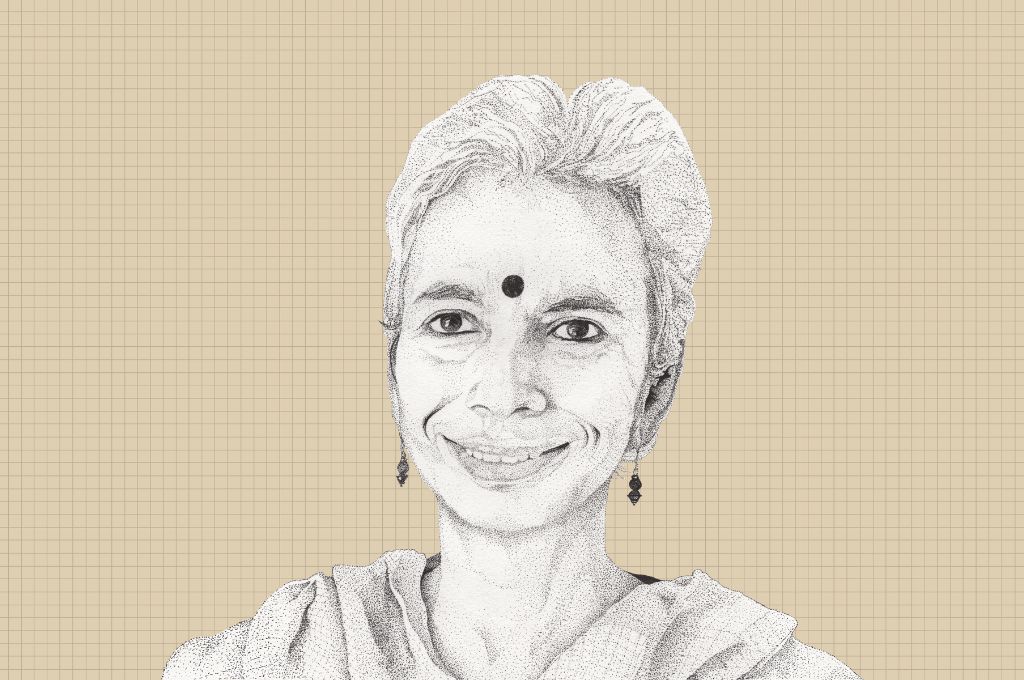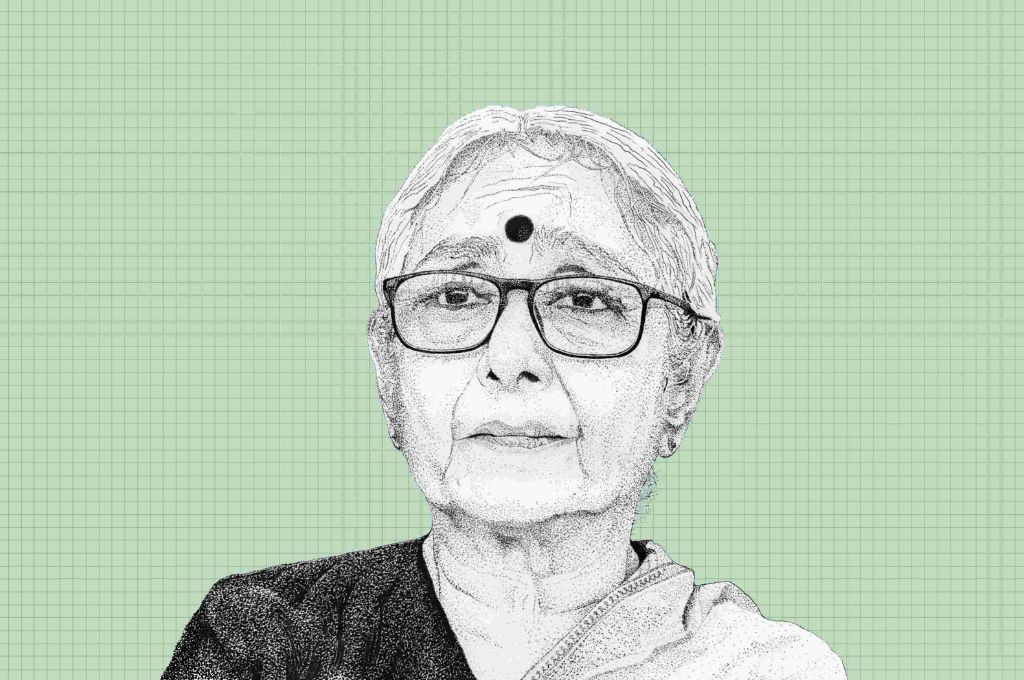Dr Vandana Shiva is a physicist, environmental activist, and food sovereignty and anti-globalisation advocate. Trained as a scientist in quantum theory from the University of Western Ontario, Dr Shiva founded the Research Foundation for Science, Technology and Ecology, and Navdanya, an organisation which promotes biodiversity conservation, organic farming, and the rights of farmers. She has authored more than 20 books, on topics ranging from the ill-effects of the Green Revolution to the idea of Ecofeminism.
Dr Shiva started her ecology movement by volunteering with the famous Chipko movement. She has been at the forefront of the fight against the imposition of genetically modified seeds on Indian farmers by global conglomerates.
In this interview with IDR, she discusses her journey in biodiversity conservation: what she learned from the women in the Himalayas and how her knowledge of quantum theory informs her work in ecology. She also talks about the need to reclaim the term ‘development’ from its economic implication, to an ecological one.

You are a world-renowned scientist, a nuclear physicist, and an environmental activist. How did both of these seemingly disparate fields become your life’s work?
My chosen life was very different from the one I am living. I liked the quiet life, a life of the mind, away from everything. I’d grown up in the Himalayan forest because my father was a forest conservator, and my mother was a farmer. The forest was my world.
I chose physics because I wanted to understand nature. I thought I’d be a physicist all my life. My dream was to join the atomic energy commission, but I was very inspired by Einstein and the concept of social responsibility in science. During my masters, I was working on Purnima—the experimental fast breeder nuclear reactor—at BARC in Mumbai as part of a science talent fellowship. One day when I was back at home, showing off my work to my sister who at the time was studying to be a medical doctor, she asked me, “but what about the radiation?”
Related article: IDR Interviews | Kamla Bhasin
Nobody had told us about the radiation. I was taught about triggering chain reactions, but not about what the release of radiation does. That’s when I realised it was a one-eyed science, and I wanted to learn a two-eyed science. And so, I decided to pursue my PhD in quantum theory, so I could study the nature of matter and energy at a sub-atomic level.
When I reached the place, I saw the oak forests were now apple orchards, and the stream had water just till the ankles. It felt like I had just been amputated.
Before leaving for Canada for my PhD, I decided to visit some favourite childhood spots. I went to a place that had beautiful oak forests and a lovely stream in which we used to swim. When I reached the place, I saw the oak forests were now apple orchards, and the stream had water just till the ankles. It felt like I had just been amputated.
When I recounted this to someone at a local dhaba, a chaiwala who heard me said, “we have hope now because Chipko has started. The women in Alaknanda valley have started saying they won’t let the trees be cut.” The Chipko movement, which began in 1972, was a non-violent response by women against the large-scale deforestation in the Himalayan region. They clung to trees to protect them from getting cut. Though I did leave then, I decided the first thing I would do upon returning home would be to volunteer with Chipko.

How did the Chipko movement influence your work today, as an activist?
While I was doing my PhD, I used my scholarship money to come back every summer and winter to volunteer with Chipko. Growing up as a forest officer’s daughter, I always felt that the forest was beauty, and peace. But working with the women of Chipko, I realised that the forest is also life, livelihood, and knowledge. Everything I learned about building movements came from Chipko.
It taught me about self-organising. Women would gather daily and put a fistful of grain in a common basket, and that would be the food they ate as they protested in the forest. If one woman was involved with the protest, others would take care of her children, cows, buffaloes; and then they would rotate. I learned how you have to turn within yourself to see what resources you have, rather than looking externally.
Related article: Ordinary people, extraordinary power
Chipko taught me the value of self-help and solidarity. I remember in 1977, this forest in Haldwani, Uttarakhand was going to be logged for timber. And because the government had already faced some defeat, they decided to hire local contractors from within the village, rather than from outside. Timber was still being logged, and the village headman was given the contract for logging. Yet, his wife Bachni Devi led the protest to stop the logging.
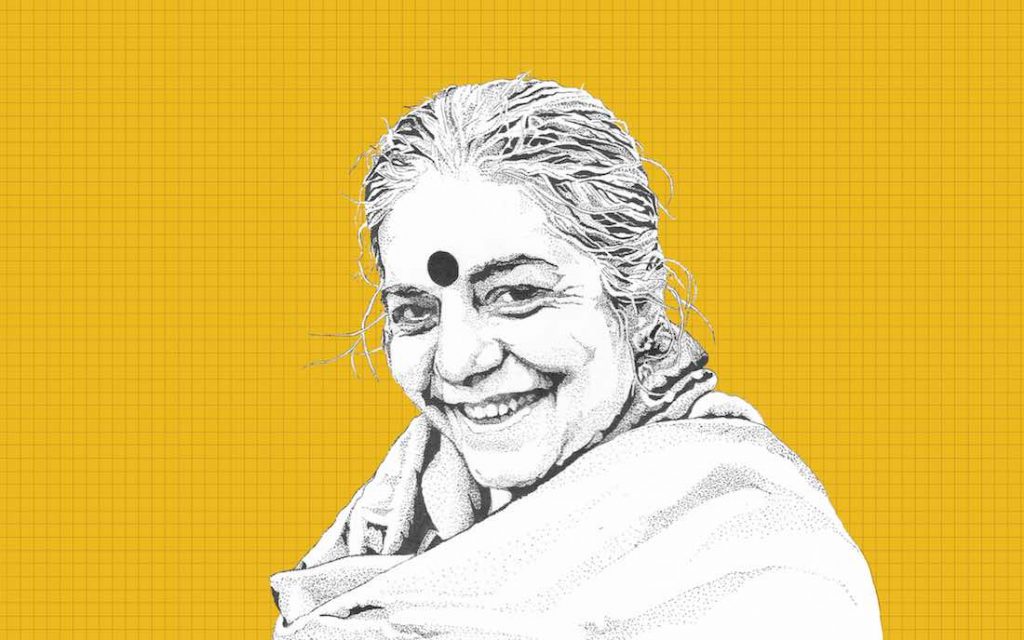
Illustration: Aditya Krishnamurthy
The women arrived en masse, carrying lanterns. Seeing them, the police who were present said, “Foolish women, can’t you see the sun is out?” These lanterns are not for the sun, said the women. “They’re for you”. The slogan they used was “Kya hain jungle ke upkaar? mitti, paani, aur bayaar” (What are the jungles’ gifts? Soil, water, and pure air). In other words, forests are not resin, timber, and revenue.
Chipko taught me ecology and biodiversity. When we finally got logging banned after the 1978 flood, it was because the authorities finally understood what the women were saying: forests regulate water, and therefore to avoid floods and droughts, we need to protect our forests. While others had treated the forest as separate from the river, the women knew it was connected.
Scientists took half a century to catch up with illiterate women.
Forty years later, this is the language of science. Today people look at the ecological functions of the forest. Scientists took half a century to catch up with illiterate women.
And it is primarily because people have a tendency to essentialise, or assign a particular quality as intrinsic to a person. They say, “You haven’t been to school, you’re no good”. Or, “you’re a woman, in a village? You’re a nobody.” But the Chipko women were shaping the future of India. It was their work that gave us the Ministry of Environment and Forests, and the concept that forests are for conservation, not extraction.
Finally, Chipko taught me humility. There is a certain arrogance that comes with science. Science is always pitted against mythology, but it is the mythology of this time. I was a part of the arrogance of science, when I was working with nuclear reactors. But Chipko taught me that everyone has knowledge, and that the role of science is merely to discover that knowledge.
Did your work in quantum theory inform your work with Chipko?
There are a few principles in quantum theory that have formed the intellectual framework for my work. The first is potential. The mechanical age gave us the illusion that everything is fixed and immutable. In a mechanical world everything is separate. The camera is separate from the notebook which is separate from the chair. But in quantum physics, elements are not treated as separate. Everything is energy, and everything is potential. And the potential is created by the interaction, or the context.
Self-organising is about recognising your own potential, not about relying on external inputs.
In quantum theory, context is the measurement. You measure it like a particle, and you get the particle. You measure it like a wave, you’re going to get a wave. It is only in the context that it expresses itself, and therefore it has the potential to be both—a wave and a particle. And because of these possibilities, there is uncertainty about what it will become.
So, potential creates uncertainty. Therefore, the idea of a deterministic world, one where everything is separate and fixed, goes against the foundational principles of life. The Chipko women knew this. They knew that you cannot separate the forest from the river—they are connected. And that self-organising is about recognising your own potential, not about relying on external inputs.
What led you to shift your focus full time to this work?
I had become a good student of the Chipko professors, and so the Ministry of Environment invited me to conduct a study on limestone mining in Mussoorie hills in 1982. This came about as a result of a speech that then Prime Minister Indira Gandhi had given at the IAS academy in Mussoorie. In it, she had said, “the queen of the hills is being stripped naked.” This statement made the entire bureaucracy move, and they approached us for this study.
Related article: P Sainath: The water crisis is not caused by drought
I went to the villages to ask the women what the key issue was. They said water. We looked at the hydro-geological map to see where the springs and limestone were, and both were exactly on the same belt. So, I told the government to change their approach from worrying about the ugly appearance of the hills, to the ecological impact of mining.
We showed that when you mine limestone, you are removing nature’s aquifer. The limestone left in the mountain created a bigger economy by supplying water, than the limestone extracted as raw material for factories. This is what I often tell people: if your economy is one rupee in extraction, the destruction of the real economy is ten rupees.
When commerce destroys life, commerce must stop, because life has to carry on under Article 21 of the Constitution.
Our study became the basis of the Supreme Court’s ruling on the mining case. It said when commerce destroys life, commerce must stop, because life has to carry on under Article 21 of the Constitution.
After mining was discontinued because of our study, I thought, my god, I can do this. I decided to dedicate myself to this work, and started the Research Foundation for Science, Technology and Ecology, in my mother’s vacant cow shed.
When and why did you start looking at GMOs?
In 1987, I was invited to a meeting on biotechnology in Bogeve in France and Geneva in Switzerland, which was attended by UN officials, some independent scientists like me, and the agro-chemical lobby, which was soon becoming the biotechnology lobby. The meeting was informal, but what was being discussed sent a chill down my spine.
They said that we’re not making enough money from chemicals and the Green Revolution, so we need to apply new techniques of splicing genes to sell GMOs, or genetically modified organisms. Back then, there were no GMOs. Doing this, they said, would allow them to secure their future growth because they could patent the GMO seeds and collect royalties from farmers. In particular, their focus would be to expand to the countries of the global south, where the biggest markets and the largest number of farmers were.
And so they needed a global treaty in place to impose patented seeds. This is why the Intellectual Property Rights (IPR), World Trade Organisation (WTO), General Agreement on Trade in Services (GATS), and others came into the picture. What was most horrifying was their ambition to limit this to a total of just five companies that would control food and health globally. Today, we have four—I call them the poison cartel.
Listening to their ideas, I asked them whether they had looked at the safety of GMOs. They responded saying- if we wait for that, we will be left behind; we can’t afford to stop. That’s when I decided that if they weren’t going to look for safety, I would.
So, I started my nonprofit Navdanya, and taught myself about seeds and seed saving. Back then, I didn’t think we would have a 120-community seed bank. I said, one seed is all it takes. I never gave up hope in my mind and heart.
You have taken on global conglomerates like Monsanto and others in the fight for biodiversity. Can you tell us about some of those experiences, and what it takes to counter the narrative especially when it is backed by power and money?
The big guys have stamina. And a lot more money. But their stamina comes only from the money, not from individual energies. I have watched about 6 generations of hitters from their side disappear—they lose their stamina individually, and then have to pick someone else to carry on the fight. And so on it goes.
To keep fighting them, it takes fearlessness, but I think that is something you cultivate within yourself. One of the things my parents taught us was: if you live by your conscience, there is nothing you’ll ever be afraid of.
Related article: Economic growth vs climate security: We can have it all
I think for individuals it takes knowing your truth. For society it takes nourishing the truth. And that’s why we cannot allow dark times to erase the potential for a future. It is not a surprise that in these dark times, it’s young people and children who are leading the movement. It’s not an accident, because they are the ones who can see through this false narrative of development and progress.
The young are facing three closures: the planetary closure—they’re really scared of climate change. Then there’s the growth closure—this outdated idea that we must destroy the planet to grow, and after that we can save the planet. Finally, the economic closure—Mark Zuckerberg has said how within a few decades 99 percent of humanity will be useless, and displaced by artificial intelligence and robotics.
The ‘development’ narrative that things are going to get better is not rubbing. Its own falsity is showing through; and the young know this.
So what is today’s development narrative, and what does an alternate paradigm look like?
People have forgotten that development is not an economic term. It’s a biological, ecological term. The fact that any of us are here today is a result of an embryo’s development that began in our mother’s womb. Structural transformation from within, is development. Externally imposed, coercive change is not.
Development evolves from within; when you do it to others, it needs a different name. I would just call it colonisation.
In 1948, the president of the World Bank brought in a new notion of development; he said, we need to go and ‘develop’ other nations. That’s when it started to go awry. Development evolves from within; when you do it to others, it needs a different name. I would just call it colonisation.
The practice of extracting, reducing the original to raw material, transforming it into an inferior product, and selling the improved, developed substitute to what you had anyway, is not development. The British did this with our cotton and indigo; since then we have seen it happen across a range of resources.
In Dehradun it was the mining of limestone; with Chipko it was the mining of timber; and what I responded to in my fight against Monsanto was the mining of genes and biodiversity. You take the genes from India, and you sell it back as a modified GMO with a patent. And today what we have is the mining of our thoughts and behaviours, for data. That is why for me, the development discourse today must be about reclaiming autonomy, reclaiming sovereignty.
All the movements I have built are about Swaraj. Beej swaraj (seed sovereignty), anna swaraj (food sovereignty), jal swaraj (water sovereignty), bhu swaraj (land sovereignty). And it works. When they were trying to privatise the Ganga, we built a movement across the country fighting land grab, which triggered the Land Acquisition Amendment Act. There have been three attempts since to make it an ordinance, but none have succeeded.
Related article: IDR Interviews | Rani Bang
Like I learned from participating in the Chipko movement, I think it is time for the development community to go where people are hurting most. They must do this to learn, and to understand what the development issues are today, so that in solidarity as democratic societies, we can create agendas for the common good, upholding diversity.
How would you like to be remembered by the future generations? What would you like your legacy to be?
I’d like to be remembered as someone who never gave up my truth and lived by my conscience. I’d also like to be remembered for my courage. Courage, not as an isolated atom in and of myself, but compassionate courage, in solidarity.
Very often, my only description is the activist. But for me the most important part is my mind. And so, I hope my legacy will also be some of the thoughts I’ve thought and the connections I have made, such as the connection between quantum theory and Chipko. There is a new power that results from these connections. Not from coercive convergences to uniformity, but from free confluences for solidarity.
I also want to be remembered as my son’s mother. I was once in Tamil Nadu and some women came running to me and said protestors against the destruction of the coast were being arrested. I just went there and stood in front of the protest. I felt like an umbrella for more vulnerable people, just like a mother is for a child. That’s what my motherhood has taught me, and I would love to be remembered as a mother.
Smarinita Shetty contributed to this article.

